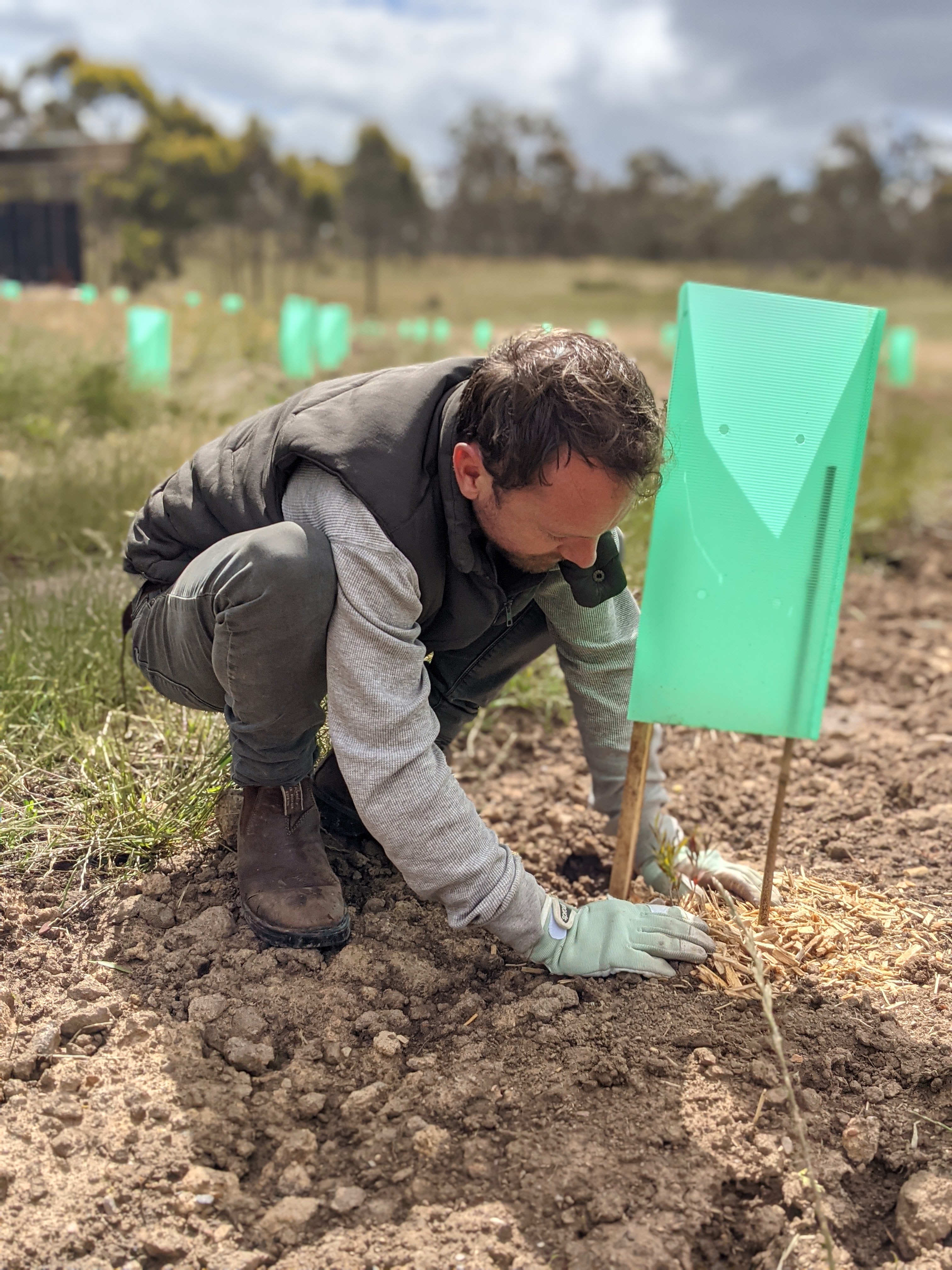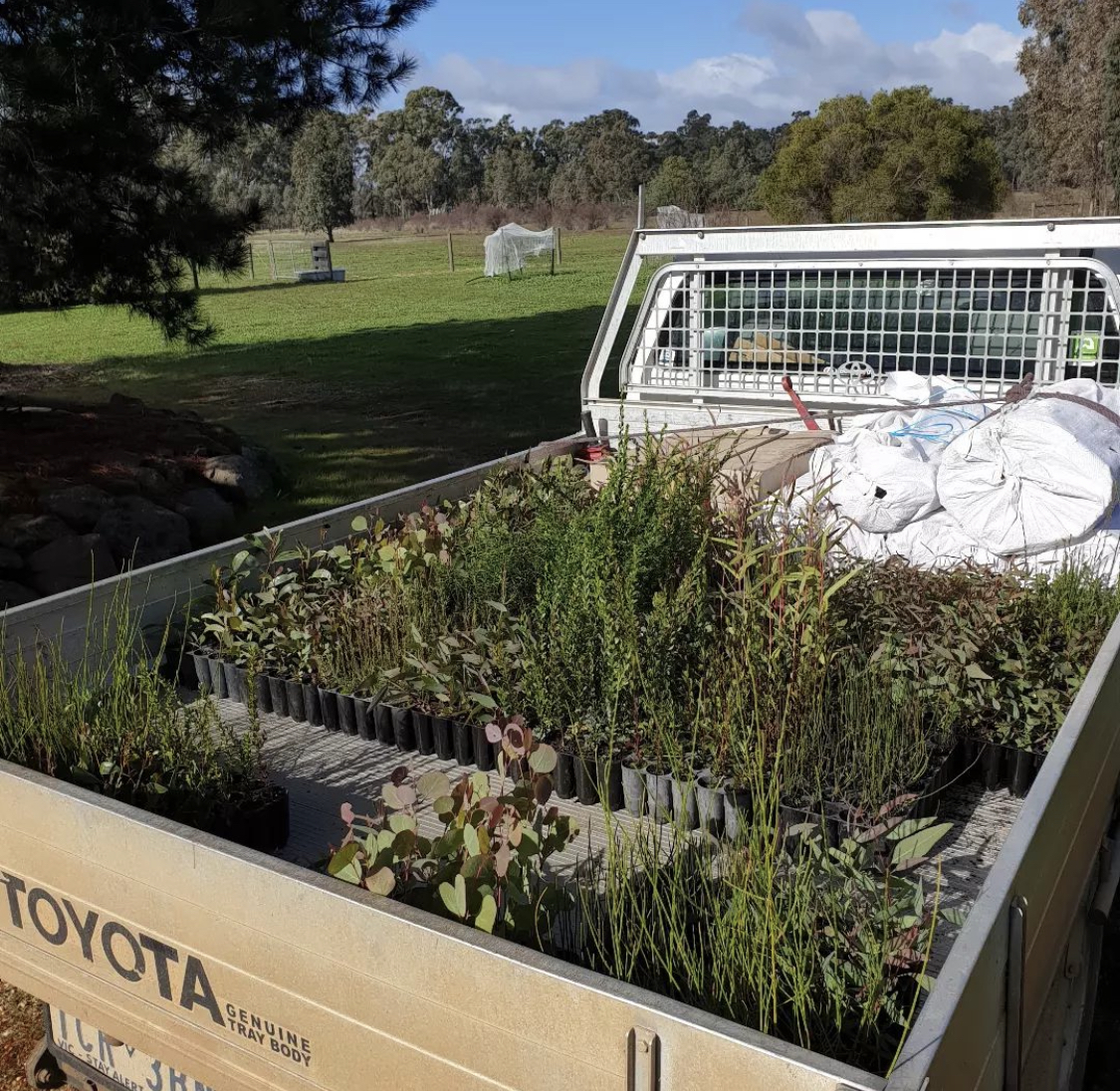November 2, 2022
|
G.J. Gardner, supporting local community.
TREES PLANTED
405
Andrew Timms leads the team at G.J Gardner Homes Melb Inner East who are generous supporters of local community groups, and their tree planting projects. This year they purchased 405 native trees (and tree guards), bringing the tally of trees in total to 2,190.

Local Landcare groups determine the best tree species for the site. The seedlings themselves are grown by local independent nurseries who have collected seed from the region by hand. The sites that have been planted include nature reserves, parklands, roadsides, school grounds, riverbanks & rural properties. This year, the trees were planted at the Colby Drive Wildlife Corridor.

A small group of volunteers worked for over five hours to plant species such as Swamp gums, Prickly Moses, sedges and Blackwoods, with an under storey of native Violets, Goodinia and other species endemic to this area of the Dandenong Ranges.

This is the land of the Wurrundjeri people of the Kulin Nation, and responsibility is shared by the Woi Wurrung group who look after the creeks and tributaries running into the Birrarung (Yarra River) and the Boon Wurrung group who traditionally look after the creeks and tributaries that run into Naarm (Port Phillip Bay).

This corridor vegetation type supports many bird species such as the Australian Wood Duck, Crimson rosella, blue fairy wren and eastern yellow robin to name a few. It is also an important corridor for the movement of arboreal mammals such as the Kreft’s Glider, ringtail possum, lesser Long Eared Bat and species of micro bats, and yellow belly glider, and ground species including swamp wallaby, Southern brown bandicoot, numerous reptile, insects, butterflies, moths and spiders, and the list goes on.
Thank you from all those who are working on this project to those who have funded this revegetation event. Special thanks go to G.J. Gardner Homes. Without your support and generosity, projects such as this one would not be possible.
Elizabeth Conolly | Coordinator | Zig Zag Reserve
Thank you Andrew for the additional funding for tree guards. These guards helps protect the new seedling and gives it protection from grazers, in particular rabbits and kangaroos. Inside the plastic sleeves, a microclimate helps protect them from harsh UV, drifting sand, frost, and wind. Once the seedlings survive their first summer and get the opportunity to develop a strong taproot, their chances of survival skyrockets.
Writer: Colleen Filippa
With a background in Environmental Science, Colleen is the Founding Director of Fifteen Trees. In 2009, after 20 years in primary, secondary and tertiary education institutions, Colleen left the classroom to start the company. Fifteen Trees is a social enterprise assisting individuals and companies to reduce their carbon footprint by supporting community groups such as Landcare, schools and environmental networks.
RECENT TREE PLANTINGS
100 TREES PLANTED
125 TREES PLANTED
250 TREES PLANTED
SIGN UP FOR OUR MONTHLY UPDATES.
Restoring Australian ecosystems. Supporting communities with their revegetation projects for a greener and healthier planet.
Fifteen Trees acknowledges Indigenous Australians as the traditional custodians of the lands on which we work, live and play.
We recognise that Indigenous Australians have cared for and lived in harmony with this land for millennia, and their knowledge and wisdom of the land endures.
We pay our respects to Elders past, present and emerging and stand in solidarity as Indigenous Australians seek a fairer and more sustainable future for the land and its people.


